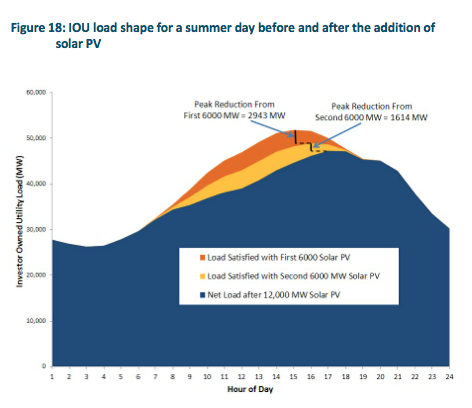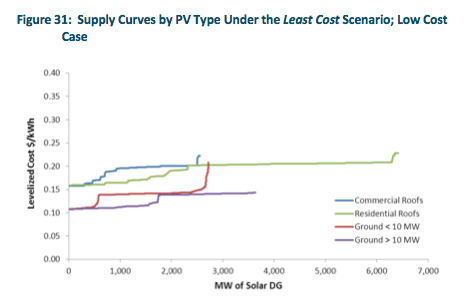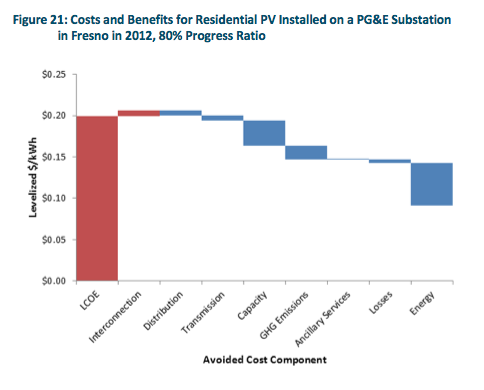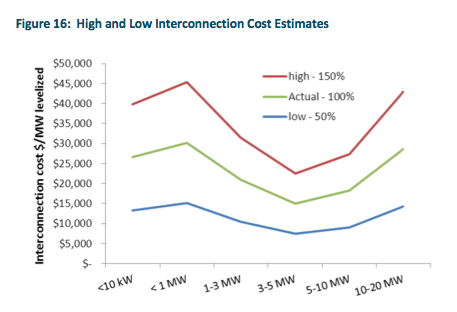A new study for the California Public Utilities Commission explores the “Technical Potential for Local Distributed Photovoltaics in California.” Basically, it’s one of the more in-depth analyses of local solar power in the country, suggesting that California has the capacity to add 15 gigawatts (GW) of local solar (20 megawatts and smaller) to its grid by 2020. The study pushes the boundaries of distributed generation by assuming that local solar can be installed sufficient to meet 100% of local demand, far beyond the conservative “15% rule” that utilities typically apply.
There are the usual caveats about the technical limitations of the current grid, but a few graphics from the report provide a glimpse into the implications of a distributed generation future.
This first chart shows supply curves for various types of distributed solar under their 15 GW scenario. What I find interesting is that the biggest chunk of distributed solar is not on the ground or on commercial roofs, it’s residential rooftops. Half of the state’s distributed solar potential is on residential rooftops.
This next chart illustrates the cost and benefits of residential solar PV for a PG&E substation in Fresno, CA. What I find interesting is that 6-7 cents of the levelized cost of solar (which includes the federal tax credit) are offset by electric system benefits and greenhouse gas reductions. Energy provides another 5-6 cents. Presumably, state incentives (the CSI, net metering, etc.) fill the gap.
This next chart of interconnection costs for distributed solar has two interesting findings. First, interconnection costs (for the utility) are lower for residential solar than for other small-scale (< 1 MW) distributed solar. Costs fall off as projects increase in size to a sweet spot of 3-5 MW and then rise again. Divided over the projected output over 25 years, however, these costs are in the hundredths of a cent per kilowatt-hour.
This chart shows what it will mean to have a significant amount of solar on the grid. It will effectively shift the peak demand period on the electricity system from the mid-afternoon to the early evening (when solar PV no longer produces much electricity). This could have interesting implications for net metering customers who count on high peak prices to pay off their PV investment.

The last item of interest is their cost projection for maximizing local solar power. Reaching the 15 GW distributed solar potential would increase the state’s renewable energy supply from 33% in 2020 to 48%. The marginal cost is about $6 billion, or about $0.15 per kWh. That’s not bad when the avoided cost (e.g. “market price referent”) in California is around $0.12 per kWh, especially when we’re talking about 2.5 GW of additional local solar power with $750 million in economic benefits and new jobs.





